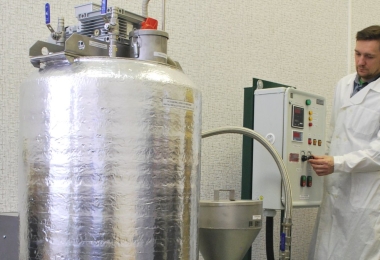Moscow region, Odintsovo
st. Soyuznaya, 7
info@techmedmsk.ru
Discovery history helium
History of the discovery of helium
Helium gas, widely used in many spheres of human material activity, is known not only for its unique properties, but also for its interesting history of its discovery. It was first discovered during the study of the Sun in the form of a bright luminous line in the spectrum of the corona of the star. What exactly this phenomenon meant, initially scientists could not explain.
Directly on Earth, the gas was discovered only 13 years later, when traces of it were found in the composition of some radioactive minerals. In October 1868, in the letters of two scientists, J. Jansen and J. N. Lockyer, to the Paris Academy of Sciences, it was mentioned that the same mysterious line on the Sun had been discovered. Since the letters of scientists about the same discovery were read out at a meeting of academics at intervals of several minutes, this created an extraordinary sensation. To perpetuate such a significant event, it was decided to strike a special gold medal.
In the early 80s of the nineteenth century, the Italian explorer Palmieri found traces of matter in volcanic gases, but this information was not initially taken seriously by the scientific community. And only in the mid-90s, the scientist Ramsay proved the truth of this fact.
Later, already in the twentieth century, many world scientific centers carried out a large layer of research on the properties of matter, in which the outstanding minds of their time – Landau, Kapitsa, Rutherford, Feynman, and others – took part.
Helium Isotopes
Isotopes of helium are varieties of atoms (and nuclei) of the chemical element helium, which have different concentrations of neutrons in the nucleus. A total of 8 isotopes are known at this time, but only two of them are stable. Natural helium consists of two stable isotopes: 4He (isotopic abundance – 99.99986%) and much rarer 3He (0.00014%; the content of helium-3 in different natural sources can vary within fairly wide limits)
Hypothetical : 2 He: Helium-2 (Diproton)
Stable : 3 He: Helium-3, 4 He: Helium-4
Unstable (less than a day): 5 He: Helium-5, 6 He: Helium-6, 7 He : Helium-7, 8 He: Helium-8, 9 He: Helium-9, 10 He: Helium-10





